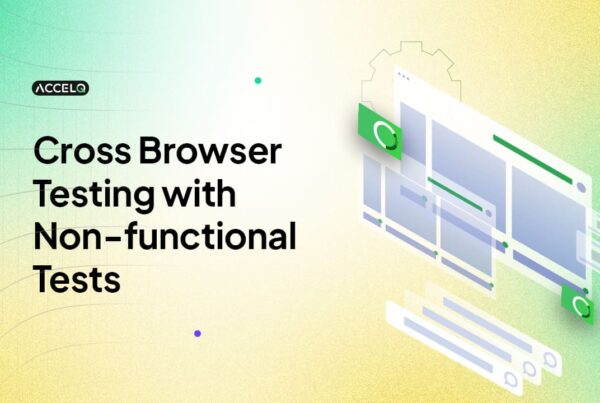What is Parallel Testing? Tester’s Comprehensive Guide
Application delivery time has always been challenging in the software development cycle. While performing, sequential testing can slow down the release cycle and also delay the feedback process.
Parallel testing is a good option because it lets many tests run simultaneously, greatly reducing the time needed for testing. This method speeds up the feedback loop and makes things run more smoothly, which makes it an important tool for current software development. This blog explores the concept of parallel testing, from its benefits to help you implement it effectively in your testing strategy.
- What is Parallel Testing?
- Why Perform Parallel Testing?
- When to Perform Parallel Testing?
- How to Perform Parallel Testing?
- Best Practices for Parallel Testing
- Example of Parallel Testing
- Executing Parallel Testing on Mobile Devices
- Benefits of Parallel Testing
- Challenges of Parallel Testing
- Conclusion
What is Parallel Testing in Software Testing?
In Parallel testing, multiple test cases can run concurrently in various settings or contexts. Using several testing environments, this method runs tests concurrently instead of sequentially. By doing thus, the testing process becomes more efficient, the feedback loop speeds up, and the total testing time is much decreased. Parallel testing is particularly useful in CI/CD pipelines where quick and reliable testing is essential to maintain the rapid pace of software delivery.
Why Perform Parallel Testing?
Testing in parallel offers several advantages, making it a valuable strategy in modern software development. Here are the primary reasons to adopt parallel testing:
Time Efficiency: Parallel testing significantly reduces the overall test execution time. This efficiency helps meet tight deadlines and accelerates the release cycles, making it ideal for fast-paced development environments.
Faster Feedback: By providing rapid feedback to developers, parallel testing enables quicker identification and resolution of issues. This quick turnaround enhances the continuous integration/continuous deployment (CI/CD) pipeline, ensuring timely updates and deployments.
Cost Savings: Parallel testing decreases the need for extensive hardware and infrastructure as tests can be run on virtual environments. This reduction leads to cost savings regarding both hardware investments and labor costs associated with long test cycles and manual intervention.
Improved Test Coverage: Parallel testing allows for comprehensive testing across various environments, configurations, and devices simultaneously. This test coverage ensures the application performs well in different scenarios and user conditions, enhancing overall quality.
Enhanced Productivity By automating and executing tests in parallel, testers can focus on other critical tasks and exploratory testing. This approach increases overall team productivity and allows for a more thorough and efficient testing process.
When to Perform Parallel Testing?
Parallel testing is not always the best approach for every testing scenario. Knowing when to implement it can optimize your testing process and resources. Here are key situations where parallel testing is most beneficial:
| Scenario | Description |
|---|---|
| CI/CD Pipelines | Essential for maintaining rapid development and deployment cycles. Parallel testing ensures tests keep pace with frequent code changes, integrating seamlessly into CI/CD pipelines. |
| Regression Testing | Reduces the time required for running large suites of regression tests, ensuring that new changes haven’t broken existing functionality by executing multiple tests simultaneously. |
| Cross-Browser Testing | Speeds up the validation process by running tests across different browser configurations simultaneously, ensuring application compatibility across various browsers and devices. |
| Large Test Suites | Manages extensive volumes of tests efficiently by executing them in parallel, providing timely feedback and faster iterations. |
| Performance and Load Testing | Simulates multiple users accessing the application concurrently, providing insights into system performance and load handling. |
| Time-Critical Projects | Beneficial for projects with tight deadlines, reducing overall testing time and helping meet delivery schedules without compromising on quality. |
How to Perform Parallel Testing?
Implementing parallel testing requires careful planning and execution. Here is the implementation process in simple steps.
Step 1: Setup the Test Environment
- Multiple Instances: Create multiple representations of the test environment to execute tests. This can be done using virtual machines, containers, or cloud environments.
- Ensure Consistency: Each environment instance is identical in configuration to avoid discrepancies in test results.
Step 2: Organize the Test Cases
- Independent Tests: Ensure that test cases are independent and can run simultaneously without dependencies on each other.
- Group Tests: Categorize test cases into groups based on functionality or priority to manage them better during parallel execution.
Step 3: Configure Parallel Execution Settings
- Define Threads: Set up the number of parallel threads running simultaneously. This can typically be configured in your test execution settings.
- Distribute Tests: Assign test cases to different threads or instances. Ensure an even distribution to balance the load and avoid overloading any single instance.
Step 4: Execute Tests in Parallel
- Start Execution: Begin the parallel test execution, ensuring that each thread or instance starts running its assigned test cases simultaneously.
- Monitor Execution: Monitor the test execution process to ensure everything runs smoothly. Look out for any issues like environment failures or resource bottlenecks.
Step 5: Collect and Aggregate Results
- Gather Data: Collect test results from all parallel executions. Ensure that logs and reports are accurately gathered from each instance.
- Consolidate Reports: Merge the results into a single report for comprehensive analysis. This includes test pass/fail status, execution times, and errors encountered.
Step 6: Optimize and Analyze
- Review Results: Analyze the entire consolidated test results and identify the errors for further improvement.
- Optimize Tests: Based on the analysis, optimize your test cases and parallel execution setup. This could involve refining test cases, adjusting thread counts, or improving environment configurations.
Best Practices for Parallel Testing
To ensure effective and efficient parallel testing, follow these top five best practices:
Isolate Test Cases: Make sure every test case can run independently without depending on the status or result of any other tests. In this way, interference and false negatives are avoided.
Optimize Test Environment: Use dependable and constant test settings. Use containerization or environment snapshots as methods to guarantee consistency throughout all test instances.
Manage Test Data: Using unique or dynamically produced test data to avoid data collisions and guarantee correct test results. Put data cleaning protocols into place to preserve the integrity of the environment.
Prioritize Tests: Sort the important tests that require quick feedback. Parallel execution of high-priority tests can yield a quicker understanding of important features.
Monitor Resource Usage: Throughout parallel test execution, track CPU, memory, and network utilization. Ample provisioning of resources is necessary to prevent bottlenecks and performance deterioration.
Example of Parallel Testing
Scenario
While testing a banking application that needs to function seamlessly across multiple browsers, such as Chrome, Firefox, and Safari. Instead of testing each browser independently, which can be time-consuming, you opt for parallel testing.
Execution
In this scenario, you run tests for the login functionality on all three browsers simultaneously. This means that while one test checks the login process on Chrome, another test does the same on Firefox, and a third on Safari. By doing this, you significantly reduce the overall testing time.
Benefits
You can quickly identify browser-specific issues through parallel testing, ensuring your application performs consistently across different environments. This approach saves time and enhances the efficiency of your testing process, enabling faster feedback and quicker releases.
Parallel Testing with ACCELQ
Parallel testing with ACCELQ allows you to manage these simultaneous test executions effortlessly, providing a streamlined, automated solution that supports comprehensive test coverage and improves software quality.
Executing Parallel Testing on Mobile Devices
Parallel testing on mobile devices can be more complex due to various devices, operating systems, and configurations. Here are the steps to effectively execute parallel testing on mobile devices:
Step 1: Set Up Multiple Devices
- Physical Devices: You will access multiple physical devices with different OS configurations and versions.
- Emulators and Simulators: Use these to mimic real device behavior.
Step 2: Testing Framework
- Automation Framework: Choose an automation framework that can support mobile testing.
- Parallel Execution Configuration: Configure the framework to run parallel tests across multiple devices.
Step 3: Organize and Prepare Test Cases
- Independent Tests: Ensure test cases are designed to run independently of each other.
- Data Management: Use unique test data for each parallel execution to avoid conflicts and ensure accurate results.
Step 4: Execute Tests
- Start Parallel Execution: Begin the parallel test execution, ensuring each device runs its assigned test cases simultaneously.
- Monitor Execution: Keep track of the execution process across all devices to identify any issues promptly.
Step 5: Collect and Analyze Results
- Aggregate Results: Get the test results from all devices and consolidate them into a single report.
- Analyze Performance: Review the results to identify device-specific issues and overall performance trends.
Benefits of Parallel Testing
Parallel testing offers several key advantages that can significantly enhance your testing process:
Time Efficiency
Parallel testing significantly reduces the overall testing time by running multiple tests simultaneously instead of sequentially. This efficiency accelerates the software release cycle, enabling quicker time-to-market.
Faster Feedback
Parallel testing provides rapid feedback on code changes, allowing developers to identify and resolve issues quickly. This quick turnaround enhances continuous integration and continuous deployment (CI/CD) workflows by ensuring timely test results.
Improved Test Coverage
Parallel testing ensures comprehensive test coverage by simultaneously allowing testing across various environments, configurations, and devices. This approach helps test all application aspects in different scenarios, leading to more robust and reliable software.
Cost Savings
Parallel testing reduces the need for extensive hardware and infrastructure by efficiently utilizing virtual environments and cloud resources. This efficient resource utilization also decreases labor costs associated with manual testing and lengthy test cycles.
Enhanced Productivity
Automating the parallel testing process helps testers focus on other critical tasks and exploratory testing, increasing overall productivity. Concurrent execution of multiple tests optimizes the use of available resources and time, enhancing team efficiency.
Challenges of Parallel Testing
1. Managing Resources
Challenge: Running multiple tests simultaneously during parallel testing takes a lot of computer power. Performance problems and test results that can't be trusted can happen when there aren't enough resources.
Solution: Use scalable infrastructure, like cloud-based systems that can assign resources based on demand, to best use your resources. Use load balancing to ensure the workload is spread fairly across all available resources. This will ensure that the program runs smoothly without overloading any node.
2. Test Data Management
Challenge: It can be hard to manage test data when multiple tests need to access and change the same data simultaneously, which can cause data problems and errors.
Solution: To avoid problems, ensure each parallel test uses separate test data or data created on the fly. Use database snapshots or data virtualization to ensure that test data settings are always the same. Ensure proper cleanup tools are used to restore the data to its original state after each test run.
3. Test Environment Setup
Challenge: Setting up and keeping test environments constant across multiple instances can be hard. If environments are not identical, test results will not be consistent.
Solution: Use containerization technologies to make test settings consistent and easy to copy across multiple instances. To make sure everything is set up the same way every time, use configuration control tools like Ansible and Puppet. Ensure the settings are always current and match the production parallel testing setup./p>
Conclusion
Parallel testing is a powerful strategy for modern software development, enabling faster, more efficient testing processes. By running tests parallelly, organizations can significantly reduce testing time, provide rapid feedback, and ensure comprehensive test coverage across various environments and configurations.
Incorporating parallel testing into your testing strategy accelerates the development lifecycle. For an efficient and seamless parallel testing experience, consider using ACCELQ. Get your demo and plan your strategy accordingly.
Geosley Andrades
Director, Product Evangelist at ACCELQ
Geosley is a Test Automation Evangelist and Community builder at ACCELQ. Being passionate about continuous learning, Geosley helps ACCELQ with innovative solutions to transform test automation to be simpler, more reliable, and sustainable for the real world.
Discover More
 Cross Browser Testing with Non-functional Tests
Cross Browser Testing with Non-functional Tests
Cross Browser Testing with Non-functional Tests
 What is Parallel Testing? Tester’s Comprehensive Guide
What is Parallel Testing? Tester’s Comprehensive Guide


